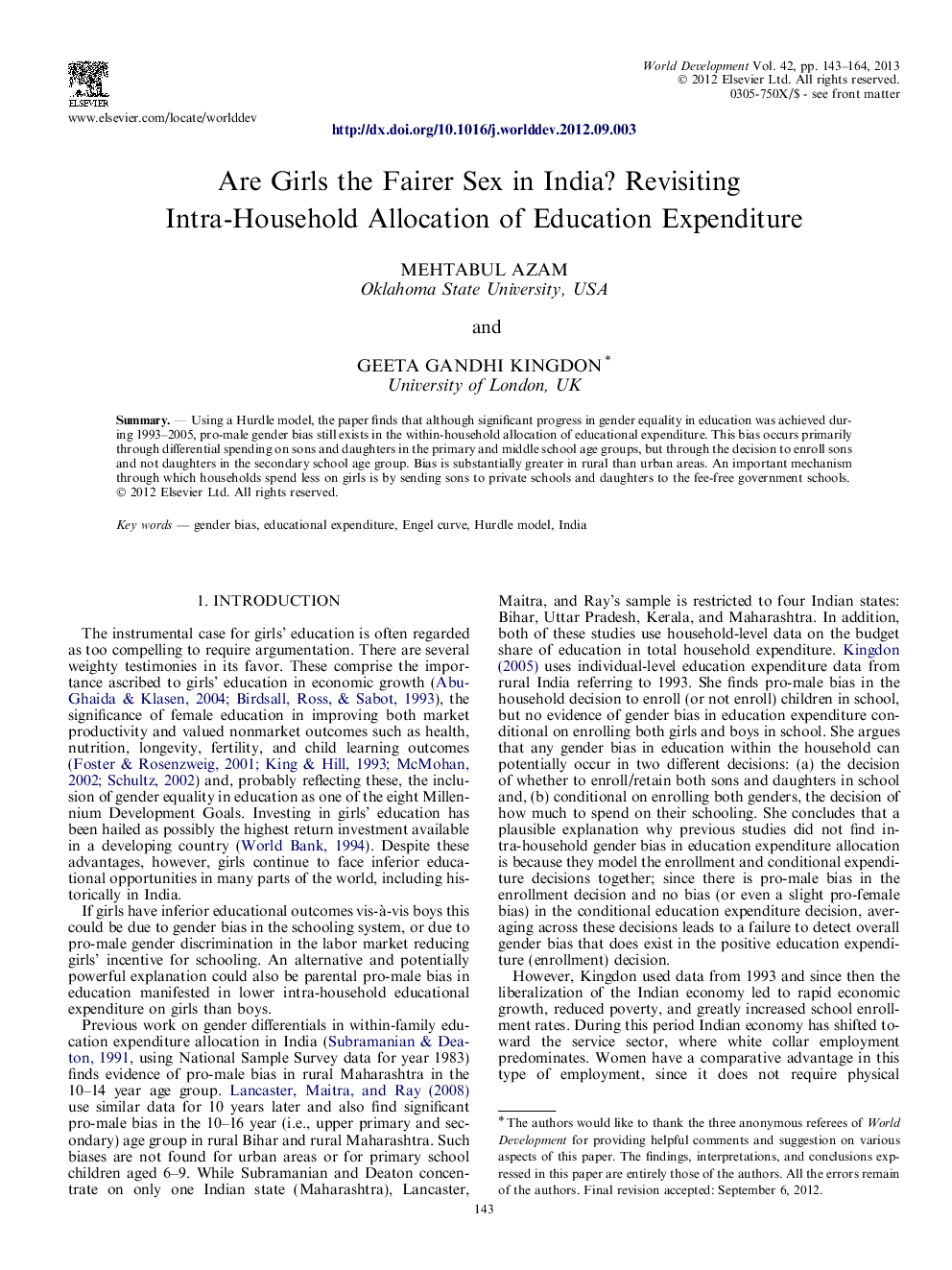| Article ID | Journal | Published Year | Pages | File Type |
|---|---|---|---|---|
| 990733 | World Development | 2013 | 22 Pages |
Abstract
SummaryUsing a Hurdle model, the paper finds that although significant progress in gender equality in education was achieved during 1993–2005, pro-male gender bias still exists in the within-household allocation of educational expenditure. This bias occurs primarily through differential spending on sons and daughters in the primary and middle school age groups, but through the decision to enroll sons and not daughters in the secondary school age group. Bias is substantially greater in rural than urban areas. An important mechanism through which households spend less on girls is by sending sons to private schools and daughters to the fee-free government schools.
Related Topics
Social Sciences and Humanities
Economics, Econometrics and Finance
Economics and Econometrics
Authors
Mehtabul Azam, Geeta Gandhi Kingdon,
